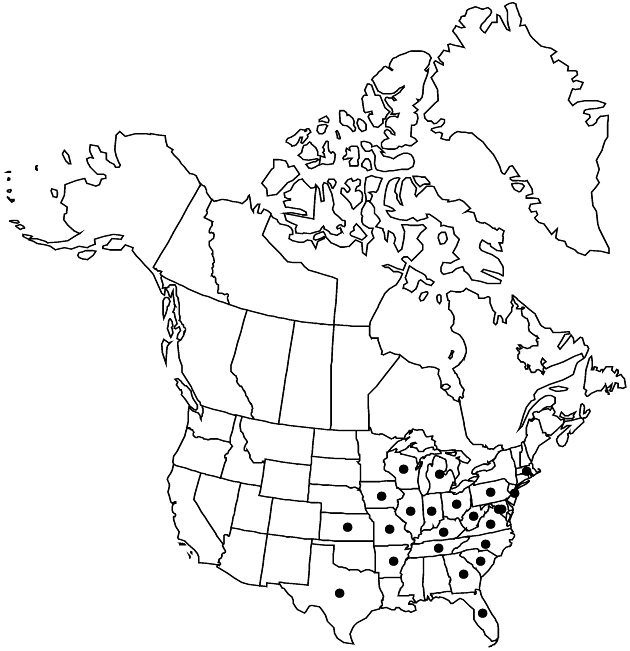Helianthus occidentalis
W. J. Med. Phys. Sci. 9: 577. 1836.
Perennials, 60–150 cm (rhizomatous, sometimes stoloniferous as well). Stems (often reddish) erect, pilose to appressed-hairy proximally. Leaves mostly basal; opposite; petioles 2.5–10 cm; blades oblong-lanceolate or elliptic to ovate, 5–20 × 1.5–7 cm, bases cuneate, margins entire or serrulate, abaxial faces scabrous to hispidulous, gland-dotted (cauline usually smaller, rarely 2–4 pairs well developed). Heads 1–4(–12). Peduncles 1–14 cm. Involucres cylindric, 9–14 mm diam. Phyllaries 20–25, lanceolate, 4.5–7(–11) × 1.5–2.5 mm, (margins usually ciliate) apices acute to short-acuminate, abaxial faces glabrate to sparsely pilose (hairs moniliform), not gland-dotted. Paleae 5–7 mm, subentire to 3-toothed (shortly mucronate). Ray florets 8–14; laminae 18–22 mm (abaxial faces densely gland-dotted). Disc florets 50+; corollas 4.5–5.5 mm, lobes yellow; anthers dark brown or black, appendages yellow. Cypselae 3–4(–5) mm, sparsely villous or glabrate; pappi of 2 aristate scales 1.5–2.8 mm plus 0–4 deltate scales 0.4–1 mm. 2n = 34 (subspecies unknown).
Distribution

c, e United States.
Discussion
Subspecies 2 (2 in the flora).
Selected References
None.
Key
| 1 | Leaves entire or nearly so, scabrous or hirsute, rough to touch | Helianthus occidentalis subsp. occidentalis |
| 1 | Leaves usually serrate, strigose or glabrous, smooth to touch | Helianthus occidentalis subsp. plantagineus |